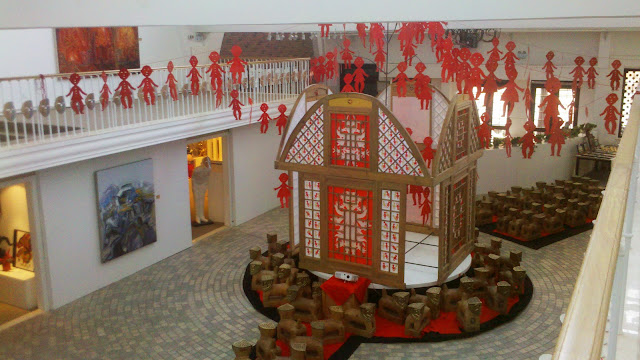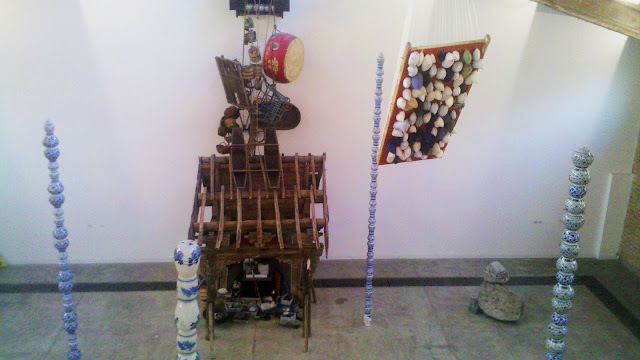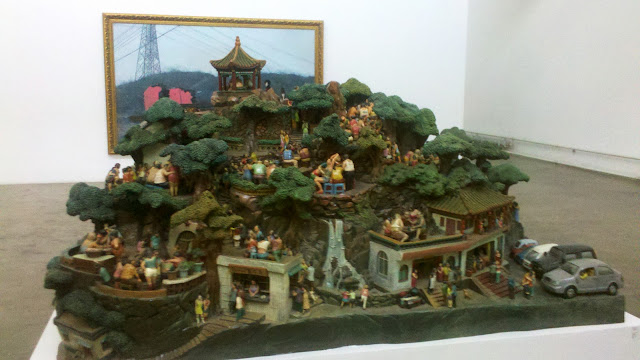After a long lasting abstinence I could not resist to come back to blogger and share my experiences with you. The last two months have been busy ones for me so I could not find time to blog but see and read for yourself.
To give you a broad overview, the weeks before Christmas were really busy work wise, I spent Christmas in Beijing with a friend (and did some sightseeing) and finally my brother visited me over New Years.
At the moment Hongkong is pretty much abandoned as a lot of people are visiting their families over CNY (Chinese New Year) and I get a few days off. To this occasion: gōng xǐ fā cái!
Okay back to topic: I really enjoyed my stay in the capital of China and would love to go back any time. Compared to Hong Kong it is vast but less crowded.
I stayed in a hostel in the centre, the hutongs, of Beijing and I loved it!! It was one of the best hostels I have ever been to and it was comparably cheap, too. As the buildings usually only have one or at most two floors, it is kinda cosy and not noisy at all. Again a huge upside, if you are used to Hongkong's high rises and construction noise.
For reference: http://www.tripadvisor.de/Hotel_Review-g294212-d674488-Reviews-Beijing_Downtown_Backpacker_Hostel-Beijing.html
Anyways: The art district is located in between the forth and the fifth ring, half-way to the airport.
The Dashanzi (Originally 718, nowadays 798) factory complex began as an extension of the "Socialist Unification Plan" of military-industrial cooperation between the Soviet Union and the newly formed People's Republic of China.It was part of China's Five-Year plan. At the request of then-Premier Zhou Enlai, scientists and engineers joined the first Chinese trade delegation to East Germany in 1951, visiting a dozen factories. The project was green lighted in early 1952 and a Chinese preparatory group was sent to East Berlin to prepare design plans.
The architectural plans were left to the Germans, who chose a functional Bauhaus-influenced design over the more ornamental Soviet style, triggering the first of many disputes between the German and Russian consultants on the project. The plans, where form follows function, called for large indoor spaces designed to let the maximum amount of natural light into the workplace. In total it covered an area of 500.000m². By the time the factories opened in 1957 it was one of the most popular working places in Beijing as it offered accommodation, space for free time activities such as sports and lots of German influence, ranging from motorbike stunts, classical music and good dental care.
By 1980 the work slowly declined due to reforms and lead to a complete stop of production in 1995. Since then, artists looking for cheap accommodation away from downtown slowly settled in, forming the art district as seen today. But enough of the history. Nowadays it is the most famous location for artists to show their latest pieces of art including Ai Wei Wei, Xu Yong, Huang Rui or Sui Jianguo. In addition fashion shows, exhibitions and galas were be hosted, featuring international guest like Morcheeba or Cindy Crawford.
Here are a few impressions of the work. Sorry for the poor quality, I only had my cellphone with me as it was a spontaneous trip. Enjoy!
 |
| Random work: Looks like it was made for my build? ;) |
 |
| Again a Buddha, being a commonly used motive. |
 |
| Don't you just love fat dancing red buddhas? |
 |
| Inside one of the renovated factories. Very creative and innovative. |
 |
| Huge installation of commonly used articles in daily life. |
 |
| A plastic model showing the vulgarity in today's society. |
 |
| My favorite piece: 50 bronze wolfs surrounding a lone warrior. |